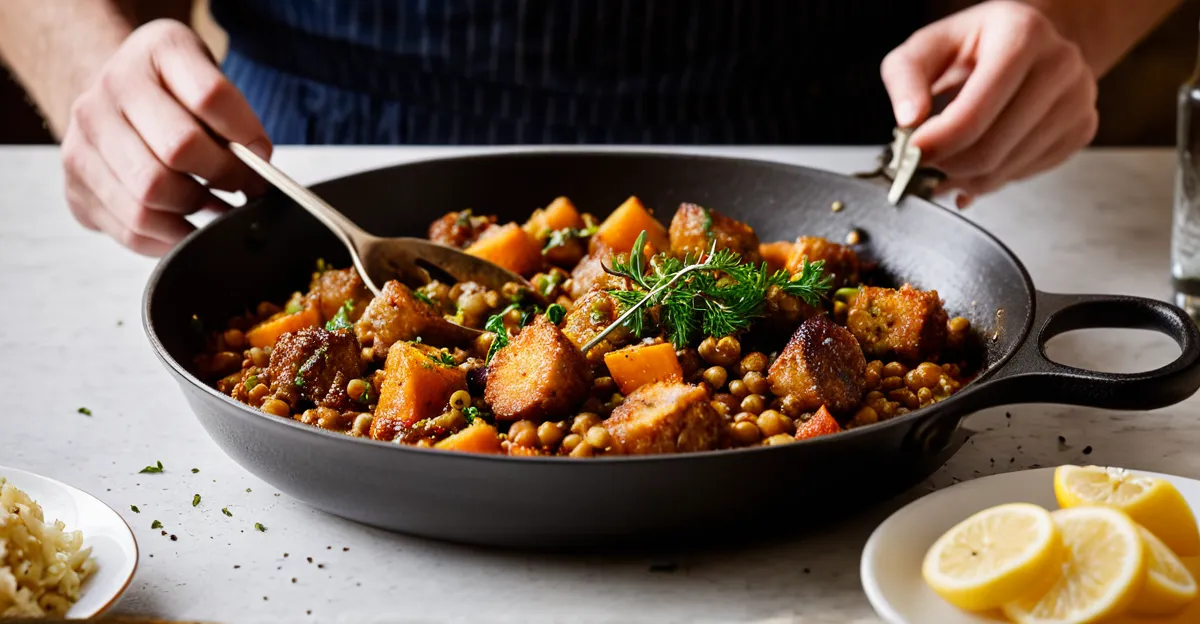Core Ingredients in Traditional UK Cuisine
Traditional UK dishes rely heavily on essential British ingredients that shape their unique flavours. Among the most prominent are potatoes and root vegetables, which feature ubiquitously in main courses. These hardy vegetables are versatile, serving as mash, roasted sides, or components in stews, providing both texture and substance.
Meat plays a crucial role in classic British cooking. Beef and lamb are particularly common, often used in dishes like shepherd’s pie and roast dinners. These meats are lauded for their rich flavors and complement traditional recipes beautifully. Other meats, such as pork and poultry, also contribute but to a lesser extent.
This might interest you : How Have British Culinary Traditions Evolved Over Time?
Fish and seafood hold a special place, especially in coastal areas. Cod and haddock, for instance, are staples for fish and chips, a dish deeply embedded in British culinary identity. Their mild taste pairs perfectly with crispy batter and chips, making this one of the most iconic UK dishes.
Together, these ingredients form the backbone of many beloved traditional UK dishes, demonstrating a balance of land and sea offerings that define British cuisine.
Also to see : What are the key ingredients for a classic toad in the hole?
Grains, Dairy, and Fats in British Recipes
Traditional UK dishes often rely on flour in UK dishes like wheat flour, which serves as a foundational ingredient for many beloved puddings and pastries. Wheat flour’s versatility allows it to create textures ranging from light and fluffy to rich and dense, essential for recipes such as steamed suet puddings and flaky pie crusts.
Suet is another cornerstone fat in classic British cooking. Extracted from the hard fat around the kidneys of beef or mutton, it contributes moisture and richness to both savory and sweet dishes. Suet’s unique properties make it indispensable in dumplings and traditional puddings, lending a distinctive texture that butter alone cannot replicate.
Butter and other British dairy products such as cream and milk hold a crucial role in balancing flavors and enriching textures. Milk is often used to bind ingredients or create smooth sauces, while cheeses add depth and variety to meals ranging from simple dishes to elaborate bakes.
Together, these ingredients—flour, suet, butter, and milk—form the backbone of many classic British cooking techniques, underlining their importance in maintaining the authenticity of traditional UK dishes.
Flavor Foundations: Herbs, Seasonings, and Stocks
Understanding the essential British ingredients that shape flavour is key to mastering classic British cooking. British herbs like parsley and thyme are staples, offering fresh, aromatic notes that brighten many dishes without overwhelming their traditional character. Parsley provides a mild earthiness, while thyme adds subtle warmth and complexity.
Traditional seasonings go beyond herbs to include onion, garlic, and leeks, which build deep flavours. These vegetables form the aromatic base in stews, soups, and casseroles, lending savoury richness that complements meats and root vegetables common in traditional UK dishes.
Meat stocks and gravies, crafted primarily from bones and trimmings of beef, lamb, or chicken, are foundational flavour enhancers. These stock bases intensify the taste of roast dinners and shepherd’s pie alike. The synergy between carefully prepared stocks, herbs, and traditional seasonings ensures dishes achieve their characteristic depth and comfort, anchoring British culinary traditions in every bite.
Iconic Dish Ingredients for Popular UK Recipes
Popular traditional UK dishes often centre on a few iconic ingredients that define their classic appeal. Take shepherd’s pie—its foundation lies in tender minced lamb layered under a creamy mash of potatoes, highlighting the essential British ingredients of lamb and root vegetables. This combination offers both hearty nutrition and comforting textures.
Roast dinners, a Sunday staple, showcase roast beef paired with Yorkshire pudding, a batter-based side made from wheat flour in UK dishes. The meal is crowned with rich gravy, often crafted from meat juices or stock bases, tying together flavours in a memorable way.
On the coast, fish and chips remain a favourite. The signature elements are flaky white fish like cod or haddock, encased in crispy golden batter, accompanied by thick-cut potatoes. This dish exemplifies how simple ingredients create enduring classics.
Lastly, British puddings, particularly suet puddings, depend on suet combined with wheat flour for structure and richness. These puddings exemplify the use of traditional fats to produce distinctive textures that define British desserts.
These ingredients prove pivotal in crafting the flavour profiles that make these dishes enduring components of British cuisine.







